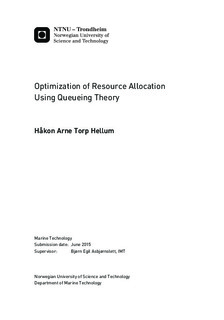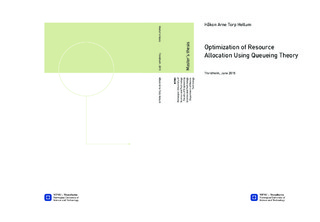| dc.description.abstract | As the ice in the Arctic region is melting, new areas will open for oil exploration and production. These areas are however remote, with long sailing times from shore. In addition, the
main warehouses of the oil companies are located in the southwestern part of Norway, thus
increasing the transportation distances further. To operate, the offshore installations need a
lot of equipment, some of which is absolutely necessary for the operation, so called mission
critical equipment. This type of equipment have been the main focus in this thesis. When
this type of equipment breaks down, or it is no longer needed, it is sent to one of the main
warehouses for maintenance and recalibration. By storing spares of this equipment closer to
the installation, response time when equipment breaks down is reduced.
Three possible supply chain scenarios were created. The first scenario is the current scenario,
where equipment is sent by trucks from one of the main warehouses and to the Hammerfest depot, from where it is shipped to the offshore installations by Platform Supply Vessels
(PSVs). The two other scenarios utilize a offshore depot. The depot is assumed to be a converted bulk-carrier. In scenario 2 this depot vessel sails from Hammerfest, while in Scenario
3 it sails from one of the main warehouses. For scenario 2, the equipment is transported by
truck to Hammerfest. For a continous operation, it was assumed that two vessels are needed.
By setting an operability constraint the supply chain could be optimized with respect to
costs. Operability is the percentage of time inventory of the equipment is present at the
installation. Then, by combining the Genetic Algorithm in MATLAB with queueing theory,
this optimization problem was solved. It was created as a closed queueing network, meaning
that a finite population of customers travel inside the network. This was chosen due to the
nature of the equipment studied. The steady state probabilities was calculated using Buzen s
algorithm.
Three demand cases were studied. The first case was low demand, where demand arises
twice a year. In the medium demand case, demand arises every month. The final case, high
demand, demand arises twice a month. In queueing theory, demand is modelled as arriving
customers. In a closed queueing network where there are no customers arriving from outside
the system, this arrival rate is equal to the service rate at the offshore installation. By varying
the transportation costs for the system, an offshore depot vessel seemed more viable for the
high demand case, thus preferring to allocate the inventory closer to the installation. | |

